Sign up for the Morning Brief email newsletter to get weekday updates from The Weather Channel and our meteorologists.
Every year, Americans buy 25 to 30 million real Christmas trees to decorate their homes over the holidays, according to the National Christmas Tree Association. But that's not bad news. Most experts agree that buying a real tree is the more eco-friendly option, because as trees grow, they clean the air and provide habitats for wildlife. Christmas trees are also biodegradable and recyclable, which means that if they are disposed of properly, they can give back to the environment long after the holiday season is over. The key is to make sure that they don’t end up in landfills.
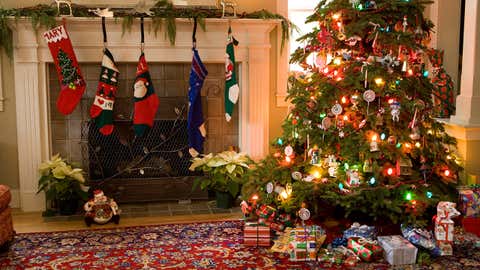
Unfortunately, Christmas trees don’t make good firewood because the chemical creosote tends to build up in the wood. This can cause them to burn extremely hot and can send dangerous sparks flying. However, there are lots of other ways that you can get rid of your tree in an eco-friendly way.
1. Re-Plant It.
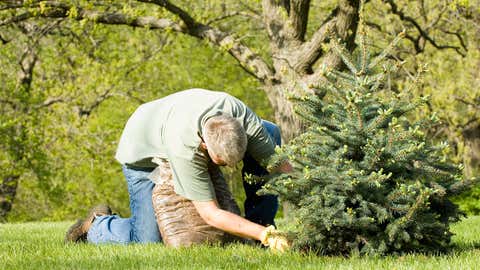
If you bought a Christmas tree with a root ball this year and you have a backyard with room for a new tree, the best thing you can do is replant it as soon as you can after the holiday so that it can continue to grow and provide a home again for backyard wildlife. Many kinds of Christmas trees, such as the Norwegian Spruce and Fraser Fir, are pretty resilient, so they’ll likely recover quickly even if their branches have already started to droop.
2. Turn the Whole Thing into a Bird Feeder.
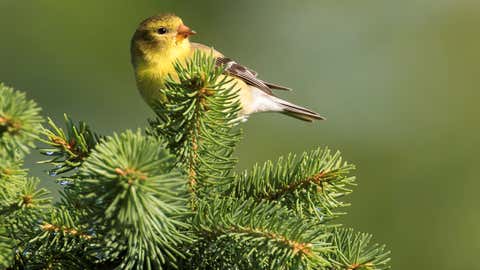
Even if you didn’t buy a tree with roots, you can still use it to help feed backyard birds. Just stick it outside for the winter and string it with popcorn, cranberries, stale bread, dried fruit or even whole sunflower heads. You’ll have chickadees, sparrows, cardinals and other backyard birds eating from there in no time. Plus, the branches will provide some shelter for the birds from the cold weather while they snack.
3. Create a Stump Bird Feeder.
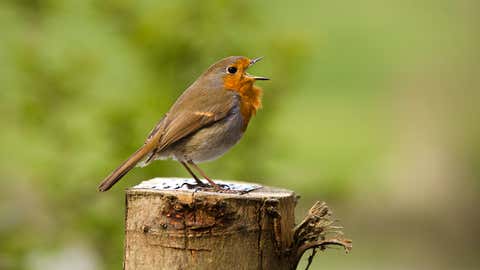
Don’t want a whole dying Christmas tree just hanging out in your yard all winter long, but still want to feed the birds? Cut up the trunk into stumps and turn the stumps into bird resting places and mini, natural bird feeders. You can leave some seeds on top of the stumps and, if you remember to turn the stump over every day to reveal worms and insects underneath it, the birds will love you.
4. Use Branches In Your Garden.

Cut Christmas tree branches from your tree, remove all the needles, trim the branches down, and use them as support sticks for the legume shoots in your garden. Legumes are “thigmotropic,” which means that they grow in a particular direction when they come into contact with an object and respond to it. They often need supports or frames when growing so that they can climb upwards toward light. Christmas tree branches are perfect for this job because they have lots of texture, knobs and twigs for peas and beans to latch on to as they grow.
5. Protect Your Flower Beds from Winter Freezes.
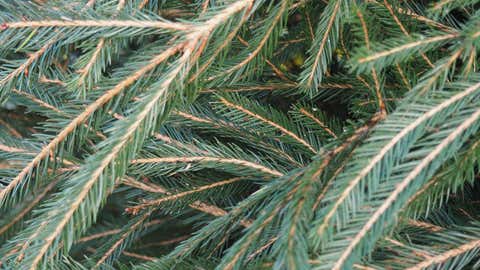
Cut whole evergreen boughs from your tree before they lose their needles, and place the boughs on your perennial flower beds to protect your dormant flowers from freezing weather. This will help the soil maintain a more steady temperature and will help protect the plants so that they will be more healthy next spring.
6. Make a Bee House.
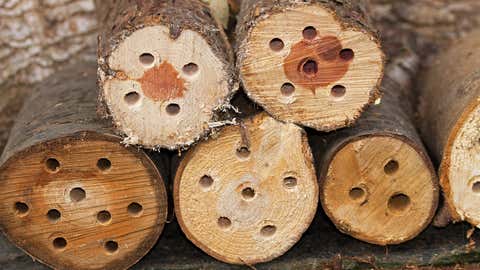
Orchard mason bees are great pollinators and they rarely sting, but they don’t live in nests like other bees, nor do they drill holes themselves. Instead, they live in the existing holes that they find in wood. So, to make a home for them, cut parts of your tree into small logs — or blocks — then drill holes about 3 to 5 inches deep into the wood. (Just be sure not to drill your hole all the way through). Then scatter the prospective bee “houses” throughout your yard and watch your new neighbors settle in.
7. Make Your Home Smell Like Pine.
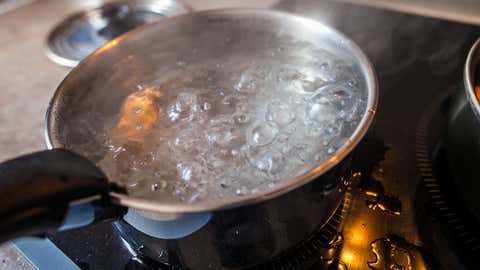
Gather up all the pine needles on your living room floor or remove the needles from your Christmas tree branches, break them up slightly (into halves will work fine), then boil them in water on your stove. Once the water starts to boil, reduce the heat to low and allow the mixture to simmer for a bit. This will fill your home with the scent of pine and it will be the perfect way to say goodbye to the holiday season. You can throw in some other ingredients too, like cinnamon or cranberries, if you want to customize and enhance the scent.
8. Get Crafty.
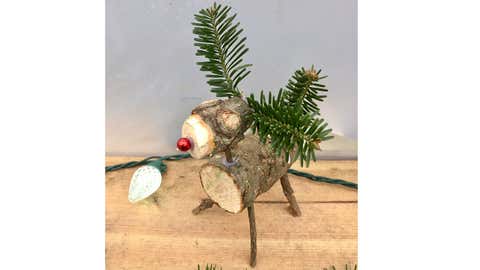
There are lots of rustic decorations and crafts that you can make from a leftover Christmas tree trunk — and it can even give you a head start on next year’s holiday gifts. For example, you can cut the trunk into thin slices to make coasters, ornaments or snowmen decorations. You can also make little reindeer decorations with pieces of the trunk and some twigs from the branches.
9. Donate It To a Recycling Center.
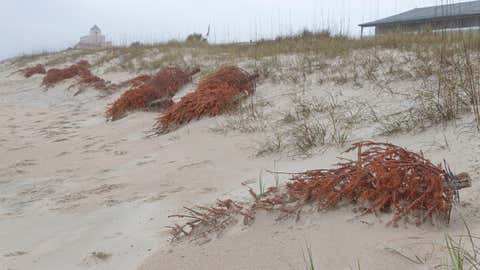
Look for a local community program in your area where your tree can be recycled and put to good use. In some municipalities, Christmas trees are sunk into artificial lakes to create temporary shelters for fish. In other places, such as in Louisiana, donated trees have been used to help stabilize lake and river coastlines by creating sand and soil erosion barriers. Some zoos accept donated trees and allow animals to play with them.
10. Mulch It.
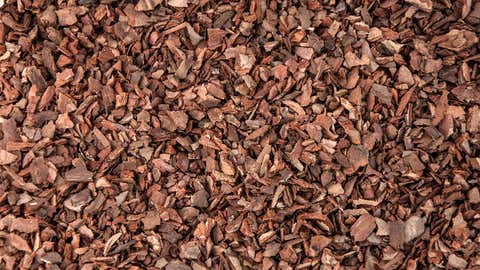
If you have your own wood-chipper, you can chip most of your tree and turn it into mulch — a decorative landscaping material that is biodegradable, making it very environmentally-friendly. But don’t worry if you don’t have your own wood-chipper (most of us don’t): lots of towns and communities have tree-cycling programs where they will chip the tree for you and use the wood chips as mulch for gardens, flower beds or park trails. Sometimes, they’ll give you a bag to take home for your yard in exchange for your donation. Check your local department of public works for information and locations where you can take your tree.
The Weather Company’s primary journalistic mission is to report on breaking weather news, the environment and the importance of science to our lives. This story does not necessarily represent the position of our parent company, IBM.



